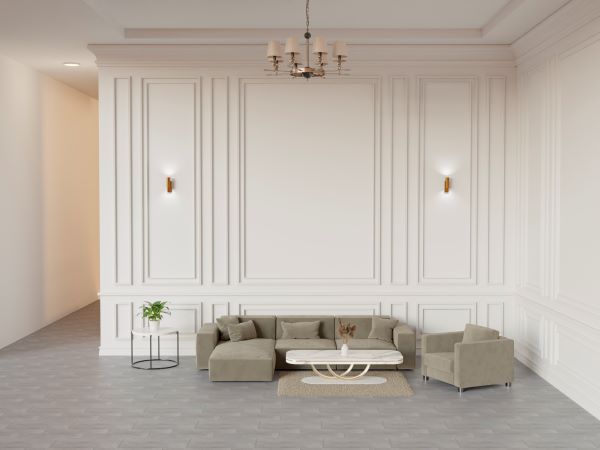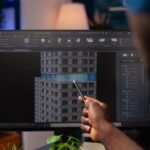Are you searching for a way to add timeless elegance and architectural interest to your home? Wainscoting panels have been a beloved interior design feature for centuries, offering both beauty and practical benefits. Whether you’re renovating a classic colonial, updating a modern farmhouse, or simply looking to protect your walls with style, wainscoting panels provide a versatile solution that fits any décor. In this comprehensive guide, you’ll discover everything you need to know about wainscoting panels—from their rich history and types to installation tips, creative design ideas, and cost analysis. Let’s explore how wainscoting panels can transform your living spaces.
Key Takeaways
- Wainscoting panels are decorative wall coverings that add style, protection, and value to interiors.
- There are several types, including raised panel, flat panel, beadboard, and board and batten, each with unique visual appeal.
- Material choice—wood, MDF, PVC, and more—affects durability, cost, and maintenance.
- Wainscoting panels can be installed professionally or as a DIY project, with options for every budget.
- Creative applications and modern trends make wainscoting panels a top choice for homeowners seeking both function and flair.
Introduction to Wainscoting Panels
Wainscoting panels are decorative wall treatments that typically cover the lower portion of an interior wall, blending form and function. Originally developed in medieval Europe, wainscoting was used to insulate stone walls and protect them from scuffs and moisture. The term “wainscot” comes from the Middle Dutch wagenschot, referring to high-quality oak used for paneling .
Over the centuries, wainscoting evolved from a practical necessity into a hallmark of refined interior design. Today, wainscoting panels are prized for their ability to add architectural interest, texture, and a sense of timelessness to any room. They’re available in a variety of materials and styles, making them suitable for both traditional and contemporary homes .
Types of Wainscoting Panels
Choosing the right type of wainscoting panel is essential for achieving your desired look. Here are the four most popular styles: Learn more about the different wainscoting styles available at Home Depot for your next DIY project.
Raised Panel Wainscoting
Raised panel wainscoting is the most traditional and formal style. It features panels with beveled or contoured edges set within a framework of rails and stiles. The center of each panel is raised, creating a three-dimensional effect that adds depth and elegance. This style is ideal for formal dining rooms, libraries, and classic interiors .
Flat Panel Wainscoting (Shaker Style)
Flat panel, or recessed panel wainscoting, offers a clean, minimalist look. The panels are set flush with the wall and framed by simple rails and stiles. This style is perfect for modern, transitional, or Craftsman-style homes, and works well in living rooms, hallways, and offices .
Beadboard Wainscoting
Beadboard wainscoting consists of narrow, vertical planks with a distinctive groove or “bead” between each board. Traditionally made from tongue-and-groove boards, modern beadboard often comes in large panels for easy installation. It’s a favorite for bathrooms, kitchens, and casual spaces, lending a cozy, cottage feel .
Board and Batten Wainscoting
Board and batten wainscoting features wide, flat boards installed vertically, with narrower strips (battens) covering the seams. This creates a repeating pattern of vertical lines, adding height and architectural interest. Board and batten is popular in entryways, stairwells, bedrooms, and both rustic and modern interiors .
Comparison Table: Types of Wainscoting Panels
| Type | Visual Description | Best For |
|---|---|---|
| Raised Panel | Beveled, raised center panels in a frame | Formal, traditional rooms |
| Flat Panel | Smooth, flat panels set in a simple frame | Modern, minimalist, transitional spaces |
| Beadboard | Narrow vertical planks with grooves (beads) | Casual, cottage, bathrooms, kitchens |
| Board and Batten | Wide vertical boards with narrow battens over seams | Entryways, stairwells, rustic/modern rooms |
Materials Used in Wainscoting Panels
The material you choose for your wainscoting panels will impact their appearance, durability, cost, and maintenance needs.
For more insights into choosing the right wainscoting materials for durability and aesthetics, visit Lowe’s buying guide.
Wood Types
- Solid Wood: Offers a luxurious, natural look with visible grain. It’s highly durable and can be stained or painted, but is the most expensive option and sensitive to humidity changes .
- MDF (Medium-Density Fiberboard): A cost-effective, smooth-surfaced material ideal for painting. It’s resistant to warping but not suitable for high-moisture areas unless treated .
- Plywood: Affordable and easy to install, plywood is often used as a substrate or for beadboard panels. It’s less refined in appearance and may require additional finishing .
Synthetic Materials
- PVC/Vinyl: Waterproof and low-maintenance, PVC panels are perfect for bathrooms, laundry rooms, and basements. They’re lightweight and easy to clean but may lack the authenticity of real wood .
- Polyurethane: Used for decorative moldings and trim, polyurethane is lightweight, durable, and resistant to moisture.
Pros and Cons Table
| Material | Pros | Cons | Typical Cost (per sq. ft.) |
|---|---|---|---|
| Solid Wood | Authentic, durable, stainable | Expensive, humidity sensitive | $5–$40 |
| MDF | Affordable, smooth, easy to paint | Not moisture-resistant | $2–$4 (per linear foot) |
| Plywood | Cheap, easy to install | Less refined, needs finishing | $1–$3 |
| PVC/Vinyl | Waterproof, low maintenance | Less authentic, hard to repair | $2–$2.50 (per linear foot) |
How Material Choice Affects Look and Maintenance
- Solid wood offers unmatched beauty and longevity but requires regular care.
- MDF and plywood are budget-friendly and easy to work with, but best for dry areas.
- PVC and vinyl excel in wet environments and are virtually maintenance-free.
Benefits of Installing Wainscoting Panels
Wainscoting panels offer a host of advantages that go beyond aesthetics:
Enhancing Aesthetic Appeal
Wainscoting panels add depth, texture, and architectural interest to any room. They can make a space feel more finished and sophisticated, whether you choose a classic or contemporary style .
Protecting Walls
By covering the lower portion of walls, wainscoting panels shield surfaces from scuffs, dents, and daily wear—especially in high-traffic areas like hallways, mudrooms, and dining rooms.
Improving Property Value
Wainscoting panels are a sought-after feature in real estate, often increasing a home’s perceived value and helping it stand out in competitive markets. They can also speed up the sale process by making interiors feel move-in ready .
Customization Options
With a wide range of styles, materials, and finishes, wainscoting panels can be tailored to fit any décor—from traditional to ultra-modern. You can choose panel height, color, and trim details to match your vision.
How to Choose the Right Wainscoting Panels for Your Space
Selecting the perfect wainscoting panels involves several key considerations:
Room Type and Function
- Bathrooms and kitchens: Opt for moisture-resistant materials like PVC or treated MDF.
- Living rooms and dining rooms: Solid wood or MDF panels add elegance and warmth.
Existing Décor and Architectural Elements
Match panel styles to your home’s architecture. Raised panels suit traditional spaces, while flat panels and board and batten work well in modern or transitional homes.
Budget and Maintenance
- Budget-friendly: MDF, plywood, and PVC are affordable and easy to install.
- Low-maintenance: Choose PVC or vinyl for easy cleaning and durability.
Color and Finish Options
Paint wainscoting panels in classic white for a timeless look, or go bold with deep hues for a dramatic effect. Staining wood panels highlights natural grain and adds warmth.
Professional vs. DIY Installation
- Professional installation ensures a flawless finish, especially for complex styles or custom millwork.
- DIY installation is feasible for beadboard, flat panel, and PVC panels, offering significant cost savings .
Step-by-Step Guide to Installing Wainscoting Panels
Installing wainscoting panels can be a rewarding DIY project. Here’s a step-by-step overview: Check out this installation tutorial by Bob Vila for hands-on help.
Tools and Materials Needed
- Wainscoting panels, rails, and trim
- Measuring tape, level, pencil
- Stud finder, saw (miter or circular), nail gun or hammer, finishing nails
- Construction adhesive (optional)
- Wood filler, caulk, sandpaper
- Paint or stain, primer (if needed)
Preparing the Wall Surface
- Remove existing baseboards and chair rails.
- Patch holes and clean the wall for good adhesion .
Measuring and Cutting Panels
- Mark the desired height (typically 32–42 inches from the floor).
- Measure and cut panels, stiles, and rails to fit each wall section.
- Dry fit all pieces before final installation .
Installation Techniques
- Apply adhesive to the back of each panel (optional).
- Nail panels into wall studs, ensuring they are level.
- Attach stiles and rails, checking alignment frequently .
Finishing Touches
- Install baseboard and chair rail.
- Fill nail holes and caulk edges for a seamless look.
- Sand smooth, then prime and paint or stain as desired.
Tips to Avoid Common Mistakes
- Use a laser level for long walls.
- Pre-paint or stain panels before installation for easier coverage.
- Continuously check for plumb and level as you work .
Creative Design Ideas with Wainscoting Panels
Wainscoting panels are more versatile than ever, thanks to modern design trends and creative applications.
Popular Styles
- Traditional: Raised panel or beadboard in classic white or soft neutrals.
- Modern: Flat panel or geometric designs in bold, monochromatic colors.
- Farmhouse: Board and batten with natural wood finishes or soft pastels.
- Minimalist: Simple, full-height panels in a single color for a sleek look .
Combining with Wallpaper, Paint, or Decorative Molding
- Pair wainscoting with patterned wallpaper above the chair rail for a dramatic effect.
- Use contrasting paint colors to highlight panel details.
- Add crown molding or picture rails for extra architectural interest .
Unexpected Applications
- Bathrooms: Use moisture-resistant panels for style and protection.
- Kitchens: Install beadboard as a backsplash or on island bases.
- Hallways and stairwells: Add board and batten for visual interest and durability .
Seasonal or Themed Décor
- Paint panels in festive colors for holidays.
- Use wainscoting as a backdrop for seasonal artwork or décor.
Maintenance and Care for Wainscoting Panels
Proper care ensures your wainscoting panels remain beautiful for years.
Regular Cleaning and Upkeep
- Dust panels regularly and wipe with a damp cloth as needed.
- Avoid harsh chemicals, especially on painted or stained wood.
Repairing Dents, Scratches, and Damage
- Fill minor dents or nail holes with wood filler, then sand and touch up paint.
- For deeper damage, replace individual panels or battens as needed.
Long-Term Care
- Inspect for moisture damage, especially in bathrooms or basements.
- Repaint or refinish panels every few years to maintain their appearance.
When to Replace or Upgrade
- Replace panels if they show signs of warping, rot, or extensive damage.
- Upgrade to new styles or materials to refresh your décor .
Cost Analysis of Wainscoting Panels
Understanding the costs involved helps you plan your project effectively. Explore cost-saving options and get a free wainscoting estimate on Angi.
Average Price Ranges
- Total project cost: $1,050 – $5,000
- National average: $1,325 – $3,600
- Per square foot (installed): $5 – $40
- DIY cost: $1 – $31 per sq. ft. (materials only)
- Professional installation: $7 – $40 per sq. ft. (materials + labor) .
Cost by Panel Type
| Panel Type | Cost per Sq. Ft. (Installed) |
|---|---|
| Flat Panel | $7 – $12 |
| Beadboard | $7 – $23 |
| Board & Batten | $7 – $23 |
| Raised Panel | $10 – $33 |
Cost by Material
| Material | Cost per Sq. Ft. (Installed) |
|---|---|
| MDF/Plywood | $6 – $20 |
| Vinyl/PVC | $5 – $10 |
| Cedar | $8 – $16 |
| Oak/Maple | $12 – $22 |
| Mahogany | $26 – $40 |
Labor vs. DIY Cost Breakdown
- Professional labor: $50 – $125 per hour
- DIY savings: Can reduce total costs by 30–50% .
Long-Term Value and ROI
- Wainscoting panels boost perceived home value and buyer appeal.
- They may help homes sell faster and for higher prices, especially in style-conscious markets.
- For best ROI, choose classic, neutral designs and quality materials .
FAQs About Wainscoting Panels
Are wainscoting panels waterproof?
Wood and MDF panels are water-resistant, not waterproof. For full waterproofing, use PVC wainscoting, especially in bathrooms .
Can I install wainscoting panels myself?
Many modern kits are DIY-friendly, but some experience with carpentry is helpful. Detailed instructions are usually provided .
What is the typical height for wainscoting?
Standard height is around 32 inches, but it can vary based on room proportions and design preferences .
Do I need to remove my baseboard before installing wainscoting?
Most systems require removing existing baseboards for a flush fit, but you can reinstall or add new baseboards afterward .
How do I maintain wainscoting panels?
Regular dusting and occasional cleaning with a damp cloth are sufficient. Avoid excessive moisture on wood or MDF panels .
Is wainscoting outdated?
Not at all! Wainscoting remains popular, with modern trends incorporating it in creative ways, such as accent walls and bathrooms.
Can wainscoting cover damaged walls?
Yes, flat or beaded panel systems are often used to cover dents, cracks, or unwanted textures .
What are the best materials for high-moisture areas?
PVC or vinyl panels are ideal for bathrooms, laundry rooms, and basements due to their waterproof properties .
How do I choose the right style?
Consider your home’s architecture, room function, and personal taste. Raised panels suit traditional spaces, while flat panels and board and batten work well in modern or transitional homes.
Does wainscoting add value to my home?
Yes, it enhances perceived value, buyer interest, and can help homes sell faster and for more .
Conclusion
Wainscoting panels are a timeless design feature that can elevate any interior, offering both beauty and practical benefits. With a variety of styles, materials, and creative applications, they provide endless possibilities for customization. Whether you’re seeking to protect your walls, add architectural interest, or boost your home’s value, wainscoting panels are a smart investment. Ready to transform your space? Contact our team today for expert consultation or to explore our wide selection of wainscoting panels.



